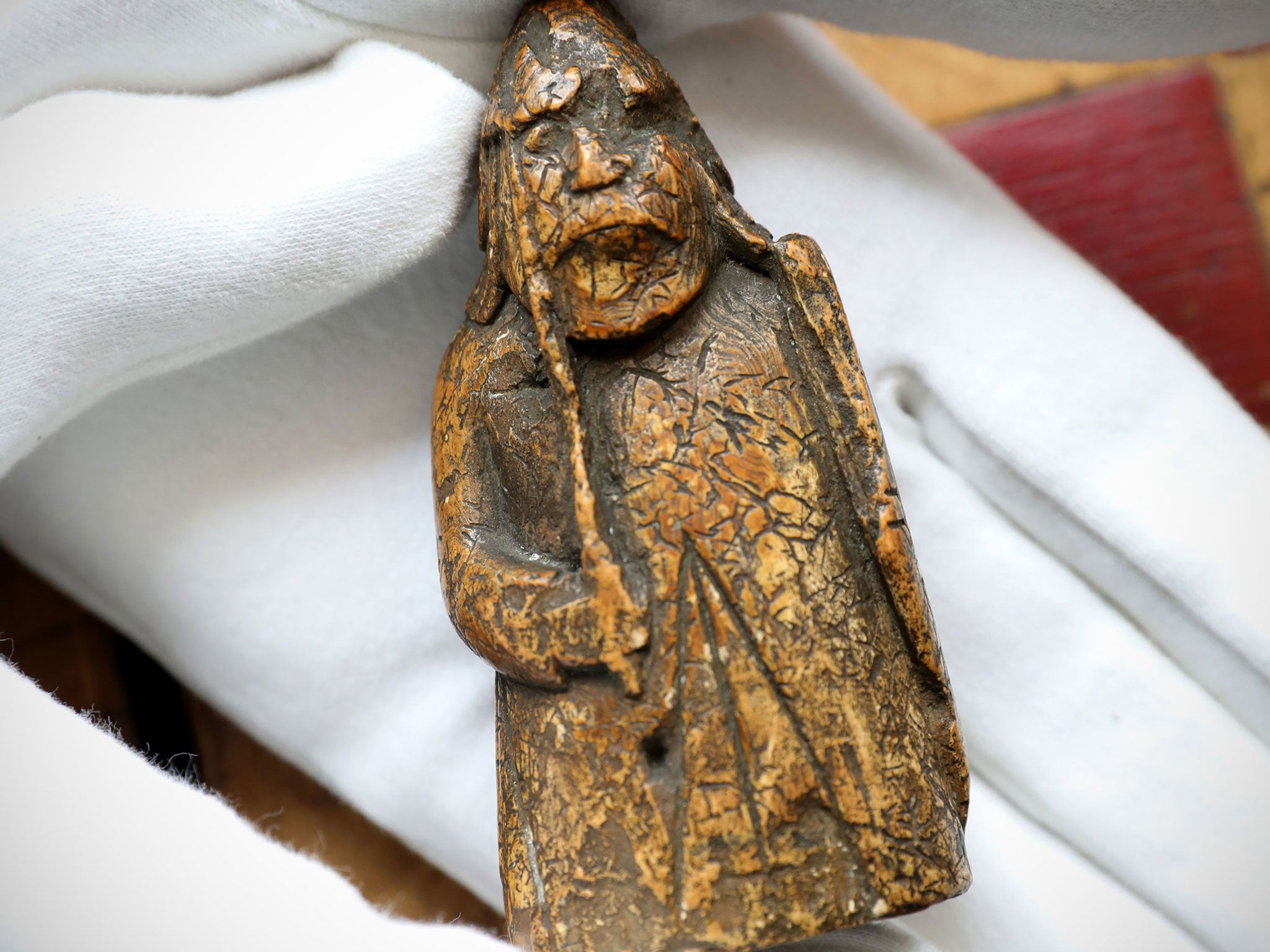Chess piece bought for £5 then left in drawer turns out to be medieval treasure worth £1m
Owners shocked to discover their mysterious figurine was one of the world-famous Lewis chessmen

An ivory chess piece which was bought for just £5 and languished in a drawer for decades could net its owners £1m after they discovered it was actually one of the long-lost chessmen from a world-famous medieval hoard.
The 8.8cm-tall piece was snapped up by an antiques dealer in Edinburgh in 1964, but neither seller nor buyer realised its vast historical significance.
But after the grandchildren of the buyer took the walrus ivory “warder” – equivalent to a modern-day rook – to Sotheby’s auction house in London, it was revealed the family heirloom was one of the famous Lewis chessmen.
This 13th-century hoard of 93 chess figures was dug up on the Isle of Lewis in the Outer Hebrides more than 180 years ago, but five pieces have been missing for years.
When Alexander Kader, a Sotherby’s expert, saw the ivory figurine, he immediately realised what a find it was.
“They brought it in for assessment,” he said. “We get called down to the counter and have no idea what we are going to see. More often than not, it’s not worth very much.
“[But] I said, ‘Oh my goodness, it’s one of the Lewis Chessmen’.”
The family, who wish to remain anonymous, said in a statement their grandfather appeared to be totally unaware of the chess piece’s origins and true value.
“It was stored away in his home and then when my grandfather died my mother inherited the chess piece,” a family spokesperson said in a statement.
“My mother was very fond of the chessman as she admired its intricacy and quirkiness. She believed that it was special and thought perhaps it could even have had some magical significance.
“For many years it resided in a drawer in her home where it had been carefully wrapped in a small bag. From time to time, she would remove the chess piece from the drawer in order to appreciate its uniqueness.”

Mr Kader estimates the warder could fetch between £600,000 and £1m when it goes up for auction next month at Sotheby’s.
“”We can safely say that a million pounds will transform the seller’s life.”
He added: “There are still four out there somewhere. It might take another 150 years for another one to pop up.”
The rest of the Lewis chessmen are held by the British Museum or the National Museum of Scotland, where they are among the biggest draws for tourists and history lovers.
The British Museum describes the set – believed to have been made in Norway and taken to the Hebrides by a trader – as an “important symbol of European civilisation” and a “remarkable group of iconic objects”.
Chess, which was invented in India more than 1,500 years ago, first arrived in Europe via the Islamic world but by the medieval era had become a hugely popular game across the continent.
Join our commenting forum
Join thought-provoking conversations, follow other Independent readers and see their replies
Comments